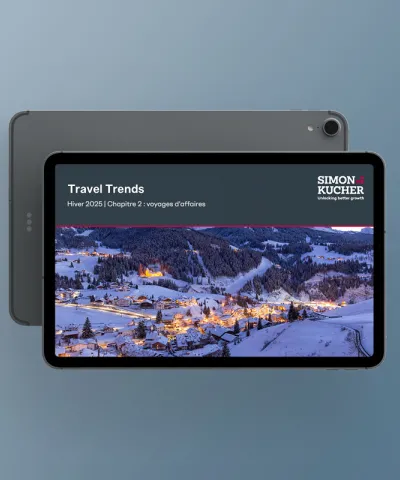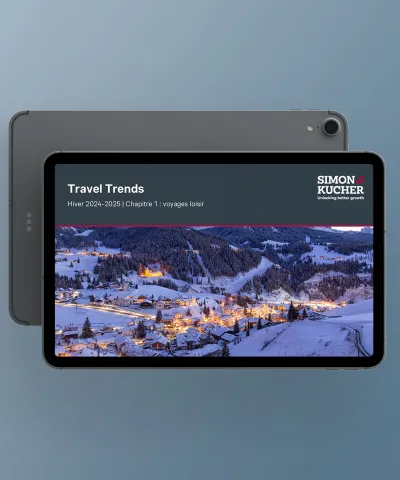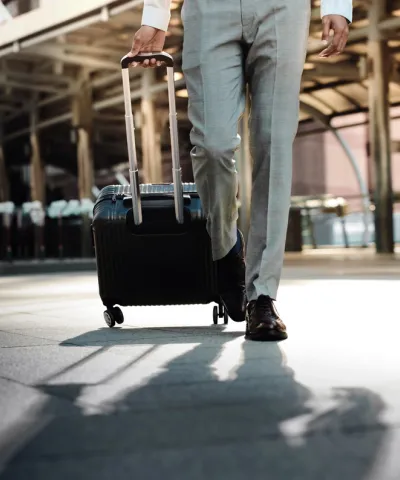Pricing in the travel industry has never been static, but today’s landscape is shifting faster than ever. Airlines and hotels are moving beyond traditional revenue management models, leveraging real-time data, AI-driven strategies, and dynamic pricing to better align with customer behavior and market demand. As competition intensifies and consumer expectations evolve, businesses must rethink how they structure fares, hotel room rates, and ancillary offerings to stay ahead.
For industry leaders, this means navigating a more complex pricing environment: one that demands precision, flexibility, and a balance between revenue optimization and customer transparency.
In this article, we explore the key trends shaping the next era of airline and hotel pricing.
The building blocks of airline pricing
Airline pricing often feels opaque, but it is built on clear, structured foundations. At its core are fare classes – the letters on a ticket that influence everything from price to flexibility and added services like seat selection and luggage. These fare classes cater to a range of passenger preferences, from those seeking affordability to those prioritizing flexibility.
The rise of low-cost carriers in the early 2000s prompted traditional airlines to unbundle their offerings. Base fares became lower, while extras like meals and checked baggage were offered as paid add-ons. Today, this trend has evolved further, with airlines embracing dynamic ancillary pricing and subscription-based models to offer more tailored options.
A significant development in recent years is the transition to continuous pricing, which allows airlines to move beyond fixed fare classes. By setting prices dynamically, airlines can better respond to real-time customer demand and market conditions, offering greater precision and flexibility. This shift optimizes revenue and enables more personalized pricing structures, while at the same time ensures that pricing is optimized to be in line with customer willingness to pay, which was a limitation of more traditional revenue management.
Ancillaries: from add-ons to revenue drivers
Once considered secondary, ancillaries are now a critical component of airline revenue. Services like seat upgrades, baggage fees, and adjacent seat purchases are increasingly subject to dynamic pricing models. For example, some airlines enable passengers to bid for upgrades or purchase bundled add-ons tailored to their needs. Similarly, the price of a seat on a plane is differentiated depending on its location, with multiple price points now presented to customers for seat selection.
Airlines are also gamifying ancillaries to drive engagement. For instance, some use behavioral nudges, like suggesting car hire during the booking process or offering dynamic seat bundles, to encourage passengers to spend more. This shift reflects a growing emphasis on personalization and behavioral insights to enhance the customer experience.
Hotel pricing: a parallel evolution
Hotel pricing strategies have traditionally revolved around the Best Available Rate (BAR). This rate acts as a benchmark, with additional pricing tiers, such as loyalty discounts and early booking non-refundable rates and promotional offers, set around it.
Dynamic pricing has become increasingly important for hotels, with rates fluctuating based on factors like local demand, lead times, and competitor activity. Hotels often incentivize early bookings by offering higher discounts the further out a guest reserves their stay. However, unlike airlines, the hotel sector faces greater challenges due to its fragmented market and less consistent pricing practices as well as the heavier reliance on online travel agents and platforms to drive sales.
Shifting traveler behavior
The pandemic reshaped travel priorities, with flexibility and refundability now central to customer expectations. Travelers are willing to pay a premium for options that allow them to amend plans without penalties. Airlines and hotels are responding by introducing differentiated tiers and adaptable pricing structures to meet these demands. We are seeing more and more differentiation both on hotels and airlines through the introduction or re-optimization of rate architecture.
Another significant trend is the rising demand for personalization. Customers increasingly value bespoke offers based on their preferences or past behaviors. Whether it’s tailored loyalty benefits or customized packages, this level of personalization is becoming a key differentiator in a competitive market.
Sustainability and the new travel norms
Sustainability is now at the forefront of many travelers’ minds. Customers are looking for eco-friendly options, with many willing to pay more for sustainable choices. Airlines are responding with initiatives like “green fares,” while hotels highlight their commitment to sustainable practices in their pricing strategies and marketing.
Economic factors are also driving a dual trend: a growing preference for budget-friendly, closer-to-home travel and a simultaneous rise in demand for high-end, luxury experiences. This polarization calls for tailored strategies to cater to both ends of the market.
The future of travel pricing
As the travel industry continues to embrace dynamic and personalized pricing models, businesses must navigate growing complexity. The challenge lies in balancing innovative pricing strategies with clarity and transparency for customers.
By staying attuned to customer needs, leveraging advanced technology, and adopting flexible approaches, airlines and hotels can succeed in this evolving landscape. At Simon-Kucher, we help travel and hospitality businesses navigate these complexities through data-driven pricing strategies, revenue optimization, and customer-centric monetization models.
Our expertise spans dynamic pricing strategies, ancillary revenue strategies, subscription models, and AI-driven personalization, empowering companies to enhance profitability while maintaining transparency and customer trust. Whether it’s refining fare architectures, optimizing rate structures, or implementing behavioral pricing techniques, we partner with airlines and hotels to create sustainable, competitive advantages.
As the industry continues to evolve, those who embrace innovation and strategic pricing will be best positioned for long-term success. We’re here to help you stay ahead. Contact us.








